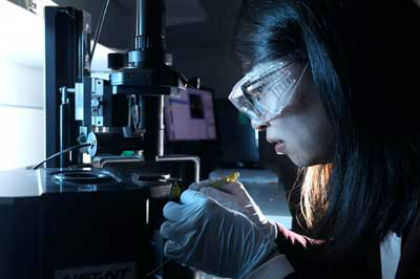|
NOVIDADES
The connection from fridge magnets to cutting edge materials science is shorter than what one might expect. The reason why a magnet sticks to your fridge is that electronic spins or magnetic moments in the magnetic material spontaneously align or order in one direction, which enables it to exert an attractive force to the steel door of your fridge and reminds you to buy milk. Magnets are one type of materials with such built-in order. A 'topological defect' in such a material occurs as a discontinuity in this order, i.e. a boundary region where the order does not seamlessly transition from one area to another. These topological structures form naturally or can be highly engineered in advanced functional materials.  This is FLEET PhD student Fan Ji in Prof Seidel's group, using SPM to study materials.
Seidel was invited by the journal editor to review current and discuss future research on domain walls and related topological structures. Although known for a long time, domain walls as one type of topological structure have only been intensively studied in detail over recent years. It is only with recent developments in high-resolution electron microscopy (HREM) and scanning probe microscopy (SPM) that it has been shown that they can significantly affect macroscopic materials properties, and even more interestingly, that they can exhibit intrinsic properties of their own. Research in this field pioneered in part by Prof Seidel has grown extensively in the last few years and now has entire conferences dedicated to it, such as the annual International Workshop on Topological Structures in Ferroic Materials (TOPO), for which the first meeting was held in 2015 in Sydney. ARC Centre of Excellence in Future Low-Energy Electronics Technologies. Posted: Feb 26, 2019. |
|||||||||||||||||||||||||